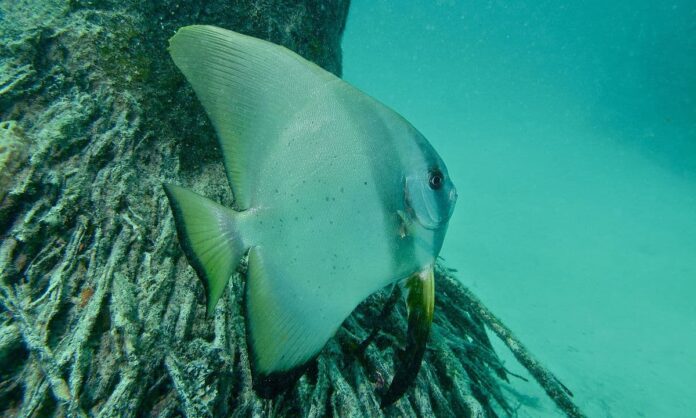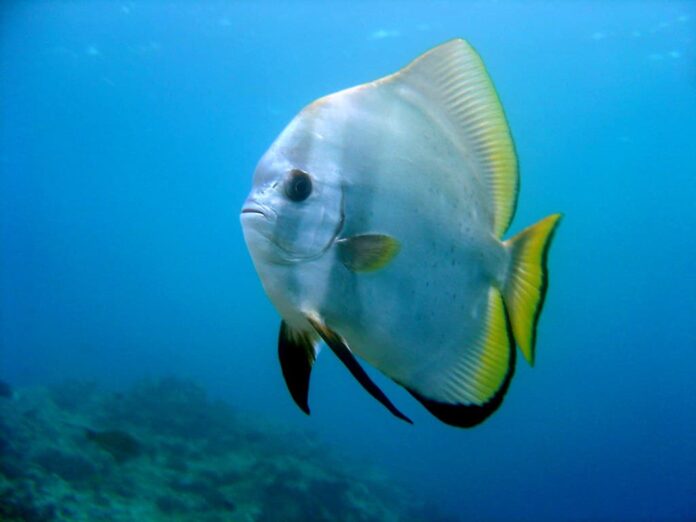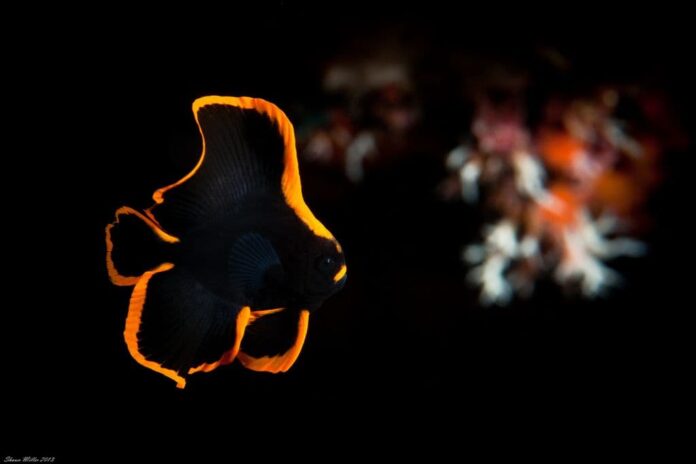Batfish has always been one of the most minimalist fish species, and dusky batfish is my most favorite. The two colors of dusky batfish is very dashing to look at, and they got capture many people’s attention. And that face is also super funny to look at as well. There could be many more interesting things about them, let’s see if you find anything new below.
1Appearance

Adult dusky batfish can grow up to 37 centimeters or longer, and they have a protruding snout and a concave dorsal profile of the head. Along the body, the dorsal fin is supported by 5 or 6 spines while the anal fin has 3 spines. When it comes to color, the gorgeous black and orange coloration is only in juveniles. The juvenile dusky batfish have triangular bodies, and they are mainly black in color with orange median fin outline.
The unique colors and shape have the purpose to mimic a toxic flatworm species to appear unattractive to possible predators. As they grow older, both of their appearance and colors change. Adults dusky batfish have a silvery spade-shaped body with a dark or dusky vertical bar running through their eye. There is also another bar that is larger running through the base of the fish’s pectoral fin. The part that stands out the most are the yellow anal, caudal, and anal fins.
2Behavior

As juveniles, dusky batfish are either solitary or live in small groups. The combination of their black bodies and small fins allows them to camouflage perfectly in the surroundings. They can blend in with dead leaves that are floating in the current when they are black. The moment their dark color fades and turns rusty brown, mangroves will be their hiding spot instead. Once they become adults, dusky batfish form large schools with up to 100 members. The movement of their silver bodies gives the impression of a much larger organism that can scare off predators.
3Feeding & Habitats

The dusky batfish are residents to the Indo-West Pacific regions, from Japan all the way to Australia. As a matter of fact, they have a wide range in Australian waters Juveniles hang out around mangroves or find shelter in caves and under ledges in inner protected reefs. As for adults, they are found under the overhangs of steep outer reef slopes that are 20 meters or deeper. Not different from other batfish species, this one has a very similar menu when it comes to diet. They feed on algae, invertebrates, jellyfish, small fish, and other gelatinous zooplankton that they can find.
Related Post: Bluespine Unicorn Fish




